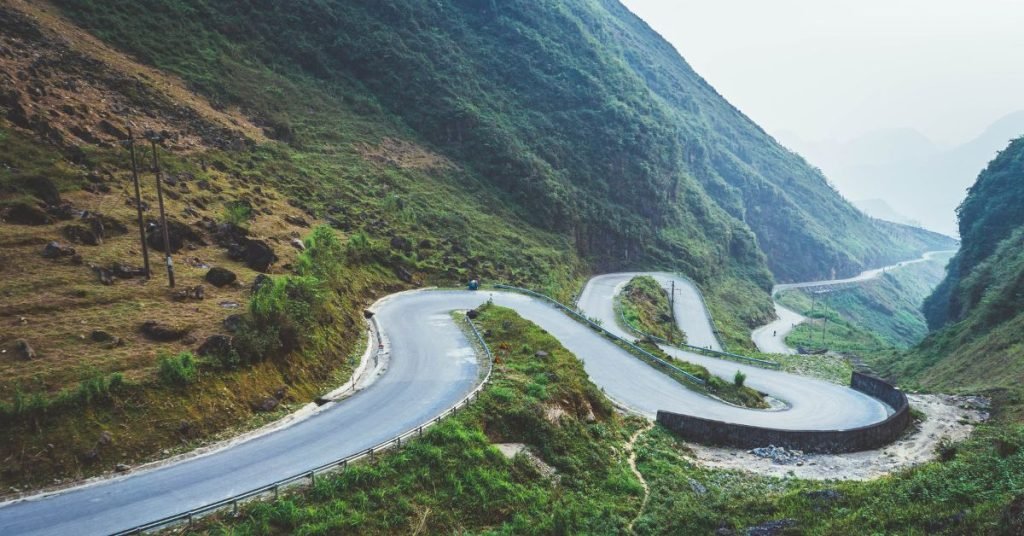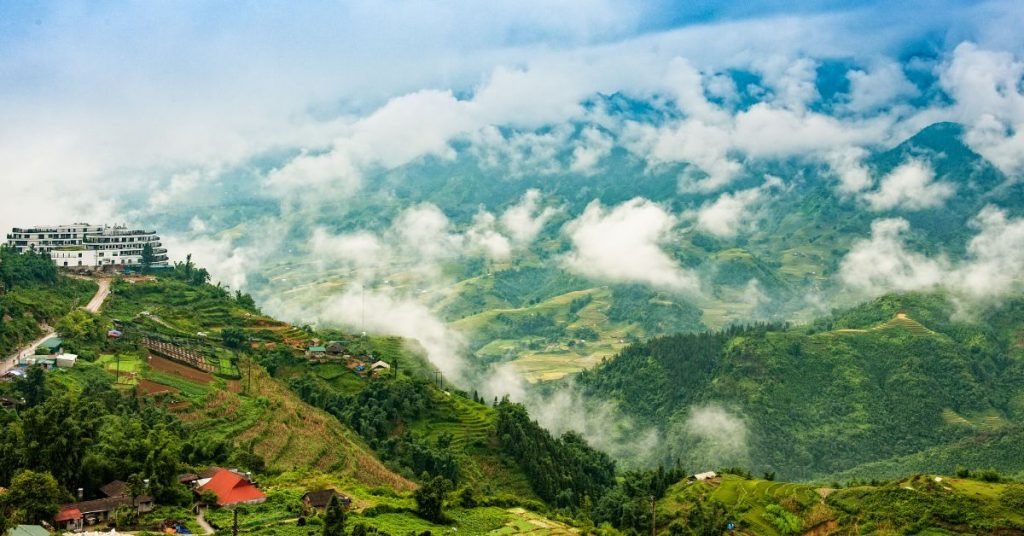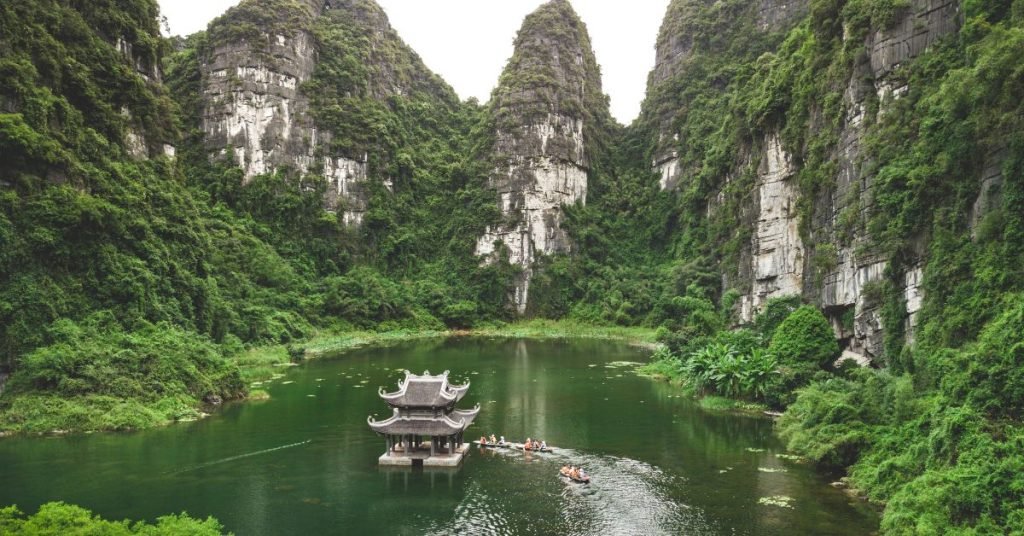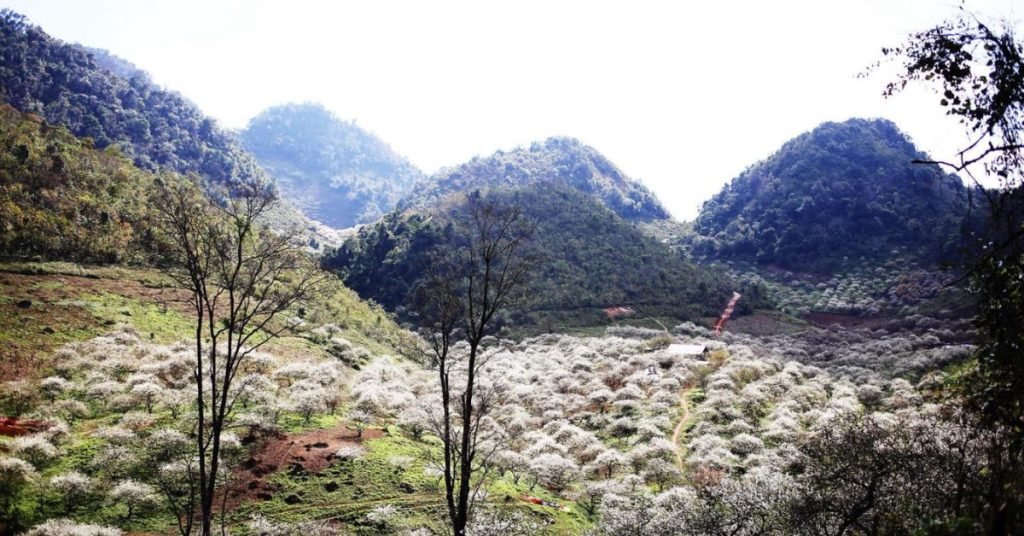The Rugged Northern Frontier
Ha Giang, the northernmost province of Vietnam, is renowned for the Ha Giang Loop, offers a dramatic landscape of limestone plateaus and verdant valleys, home to diverse ethnic minorities. It’s a place for those eager to explore off-the-beaten-path destinations.
Best Time to Visit
The best time to visit Ha Giang is during the drier months from October to April, when the weather is cooler and less rainy, ideal for outdoor activities like trekking and motorbiking. During these months, visibility is better due to less fog and rain. However, the rainy season from May to September brings its own beauty, transforming the region into lush, green landscapes, although the roads can be slippery and travel can be more challenging.
The region experiences a humid subtropical climate, with a distinct variation in weather depending on the season. Rainfall peaks from June to August, which also sees higher temperatures and humidity. Conversely, December to February is cooler and drier, making it a comfortable time for those who prefer milder weather.
Top Attractions
- Dong Van Karst Plateau Geopark (Công viên Địa chất Cao nguyên đá Đồng Văn): A geological wonder that offers stunning views of jagged limestone hills and deep valleys.
- Ma Pi Leng Pass (Đèo Mã Pì Lèng): This breathtaking mountain pass provides spectacular vistas of the gorges below.
- Meo Vac (Huyện Mèo Vạc): Known for its rugged scenery and cultural richness.
- Meo Vac Mong Village: Explore the traditional lifestyle and unique cultural heritage of the Hmong people in Meo Vac Mong Village.
- Nho Que River: Experience a serene boat ride through the stunning gorges of the Nho Que River, surrounded by towering limestone cliffs.
- Death Cliff: A dramatic viewpoint in Ha Giang offering breathtaking, panoramic views of the mountainous landscape below.
- Lung Cu Flag Tower (Cột cờ Lũng Cú): Marks the northernmost point of Vietnam, offering expansive views.
- Hoang Su Phi (Huyện Hoàng Su Phì): Famous for its terraced rice fields, best visited during the harvest season for picturesque golden hues.
- Du Gia (Xã Du Già): A tranquil village ideal for experiencing local life and culture.
Getting Around
Travelers can explore Ha Giang via the famous Ha Giang Loop, either by motorbike on their own or with an Easy Rider tour. Easy Rider tours provide a guided experience through the challenging terrain, offering deeper insights into local cultures and communities. For those looking to arrange tours, options are available starting from Hanoi or directly from Ha Giang, and they often include helpful additions like accommodations and meals. The roads in Ha Giang are predominantly winding and steep, which adds to the adventure but also requires careful preparation and driving.
Travel Tips for Ha Giang Adventure
- Accommodation Variety: In Ha Giang, you have the privilege of choosing from a wide range of accommodation options. Budget travelers can opt for homestays in local villages priced from $5-$15 per night, providing an immersive cultural experience. Mid-range guesthouses and hotels in towns like Tam Son and Dong Van offer more comfort, with prices ranging from $20-$50 per night, often including amenities like Wi-Fi and hot water.
- Diverse Dining Experiences: The culinary landscape in Ha Giang is as diverse as its terrain. Beyond ‘Thắng Cố’ and ‘Men Men’, be sure to sample ‘Bánh Cuốn’ (steamed rice rolls) and ‘Xôi Ngũ Sắc’ (five-colored sticky rice), each plate costing around $1-$3. For a heartier meal, restaurants in larger towns serve ‘Lẩu Dê’ (goat hotpot), a communal dish perfect for sharing, typically priced at $10-$15.
- Cultural Etiquette Reminders: While enjoying the local culture, it’s important to respect the customs. When visiting sacred sites or homes, a small donation or gift (about $1-$2) is appreciated as a gesture of goodwill. Bargaining is common in markets, but always remain polite and understand that a small difference in price means a lot more to local vendors than to travelers.
- Transportation Tips: Renting a motorbike is the most popular way to navigate the Ha Giang Loop, with rentals costing about $5-$10 per day. Make sure to factor in extra for fuel, which is around $0.80-$1 per liter. If you’re not comfortable driving, guided motorbike tours or car rentals with a driver are available, which can range from $20-$50 per day, depending on the service level.
- Shopping and Souvenirs: Local markets are treasure troves for souvenirs such as handwoven textiles and traditional jewelry. Prices for these items can vary greatly, so it’s advisable to browse and compare before making a purchase. Expect to pay anywhere from $2 for small trinkets to upwards of $30 for fine handcrafted goods.
Remember, these prices are estimates and can vary depending on the season and the specific location within Ha Giang. Always have some cash as smaller vendors may not accept credit cards. By keeping these travel tips in mind, you can ensure a smooth and enjoyable journey through the breathtaking landscapes and rich cultures of Ha Giang.
Discover Nearby Destinations
Sa Pa
The Highland Retreat Sapa, nestled in the Hoàng Liên Son mountains of northern Vietnam, is…
Northern Highlands
Explore the rich landscapes and cultural tapestry of Vietnam’s northeastern and northwestern regions. This guide…
Ninh Binh
The ‘Halong Bay on Land’ Ninh Binh province, located to the south of Hanoi, offers…
Mộc Châu
Highlands of Northwest Vietnam Mộc Châu is a mesmerizing plateau in Son La province, renowned…







